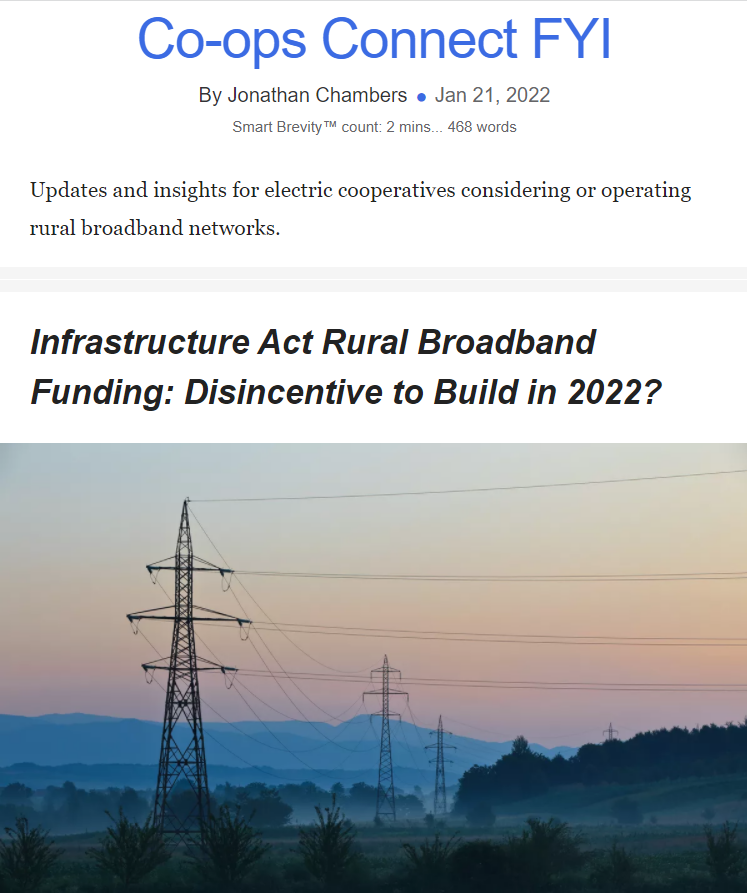Infrastructure Act Rural Broadband Funding: Disincentive to Build in 2022?
January 21, 2022
Last Week’s Takeaway:
All across the country, electric cooperative networks, financed over 80 years ago with low-interest loans, are still serving rural broadband networks.
Updates and insights for electric cooperatives considering or operating communities. Those were good investments. But do we have the patience to repeat successful funding of long-term infrastructure?
Broadband Funding Programs
There have historically been two types of rural broadband funding programs:
1. Those that subsidize serving high-cost areas (CAF, RDOF, EBB, CARES), and
2. Those that reimburse construction costs in unserved areas (ARRA, ReConnect, CARES, ARPA)
The Infrastructure Act is a mix, though most of the funding will follow the second approach.
Why it matters: The bulk of the funding will not be available for over a year, and will unintentionally discourage construction in unserved areas in 2022.
What’s ahead:
- $42.45 billion will be allocated to state programs following a Rube Goldberg-style application process established by NTIA that may or may not involve new FCC maps.
- Neither new maps nor approved state programs are likely to be ready until 2023.
The critical question: Communities planning rural construction must consider whether to build now or wait until funding programs are finalized.
The hard truth: Should you build now, you likely will not be eligible for funding later.
- Policies that force communities to wait until all the new maps and new funding programs are in place will delay service to areas the most in need.
- While policymakers may consider “look back” grants, such awards are rare.
So, is it better to wait until 2023 to build in unserved areas?
An uncertain future: With $40-50 billion in future funding, who would risk building now only to face a subsidized competitor later?
(Hint: If you think you can avoid subsidized competition, you are unfamiliar with the telecommunications industry.)
To solve this issue and encourage faster builds, federal and state policies should reward construction now.
- Fund construction in census blocks where no provider claims broadband service. That data is available today.
- Only fund construction that can be completed in 2022, prior to Infrastructure Act programs. That’s the best use of ARPA funds.
- Use an administrative structure that permits rapid execution and review by small broadband office staffs.
- Use objective criteria and screening of applicants based on demonstrated capability.
- Look at the Mississippi CARES model: in less than six months in late 2020, Mississippi established a program, awarded $75 million, AND several thousand miles of fiber were constructed to rural homes and businesses. Learn from Mississippi.
The Best Solution
Put a Stake in the Ground:
NTIA and states should provide explicit and binding guidance that “unserved” areas eligible for Infrastructure Act funding are all households that were unserved on November 15, 2021, the date the
Infrastructure Act was signed into law.
